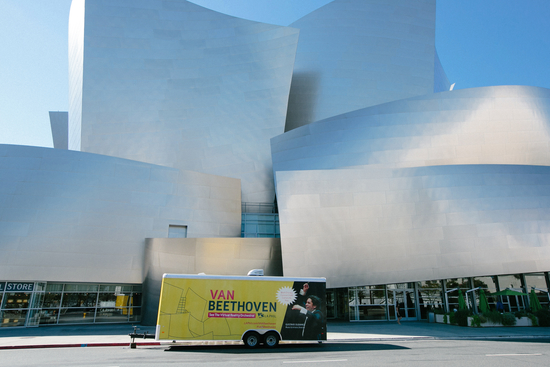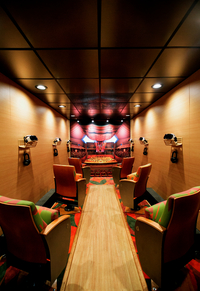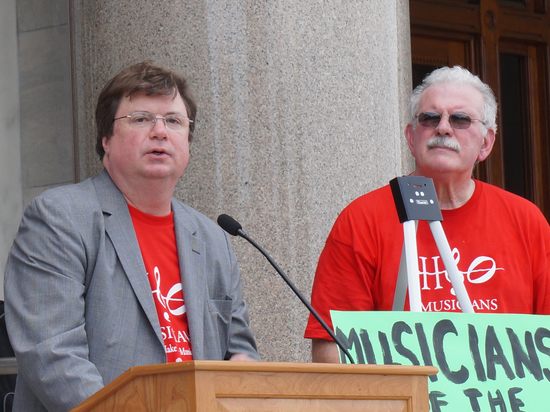New Leadership in Cleveland and Atlanta
The Cleveland Orchestra announced that its next Executive Director would be André Gremillet. He will succeed Gary Hansen, who will be retiring with more than 27 years service to the orchestra, including almost 12 years as Executive Director. Gremillet, who is a Quebec native and a conservatory-trained pianist, has previously served as President and CEO of the New Jersey Symphony Orchestra. Since 2012 he has been the Managing Director of the Melbourne Symphony Orchestra.
Cleveland will also be saying farewell to its General Manager. Jennifer Barlament, who has served in that position since 2013, has been appointed to be the next Executive Director of the Atlanta Symphony Orchestra. She has Atlanta connections, having received her bachelor’s degree in music (clarinet) from Emory University. Prior to her position in Cleveland, she served as the Executive Director of the Kalamazoo Symphony Orchestra and General Manager of the Omaha Symphony.
Barlament will replace Terry Neal, the ASO Board member and former Coke executive who stepped in as interim CEO when ASO President and CEO Stanley Romanstein resigned in the midst of last year’s lockout of the orchestra. Under Neal’s leadership, the orchestra recorded a budget surplus for the lockout-shortened season. Neal will continue to serve on the Board in various leadership roles as Barlament begins her tenure in January of 2016. The Woodruff Arts Center (the parent organization of the ASO) also announced that it has thus far raised nearly $16 million towards its Musician Endowment Campaign goal of $25 million, put in place to restore 11 positions that had been previously lost from the complement.
V for Virtual
The Los Angeles Philharmonic opened its 2015-16 season with an “Immortal Beethoven Festival: 9 symphonies, 2 orchestras, 1 conductor”. Under the baton of Music Director Gustavo Dudamel, the LA Phil is performing Symphonies 1, 2, 5, and 6; the Simon Bolivar Symphony Orchestra of Venezuela (SBSOV) will perform Symphonies 3, 4, 7, and 8; and the two orchestras will give a combined performance of the 9th Symphony. The pre-concert lectures are being given by Jan Swafford, composer and best-selling author of Beethoven: Anguish and Triumph.

Photo credit: Kelle Ramsey
In addition to six free community concerts by both orchestras, including a performance by Youth Orchestra LA (YOLA) alongside SBSOV, there was an all-Beethoven chamber concert, and “Moonlight Sonatas”, co-sponsored by Steinway & Sons, at the Griffith Park Observatory during the lunar eclipse on September 27.

Photo credit: Kelle Ramsey
From early September to mid October, VAN Beethoven, a trailer customized with Walt Disney Concert Hall seats and carpet, is touring diverse communities of Los Angeles offering a 360°, 3D virtual reality experience of the LA Phil performing Beethoven 5. Recorded under the IMA and using Oculus Rift technology, Angelenos will don Oculus goggles and binaural headsets to experience the opening three minutes of Beethoven’s Fifth Symphony from any angle within the orchestra. The VAN Beethoven experience is available as a free app, called “Orchestra VR”, in Oculus and Samsung Gear VR app stores starting in September.
Big Openings in New York State
The Buffalo Philharmonic Orchestra kicked off its 2015-16 season on September 16th with a bang. Not only did the performance feature Lang Lang as soloist, it also debuted the latest installment in renovations made to Kleinhans Music Hall, which celebrates its 75th season hosting the BPO.
However, perhaps overshadowing all of this, Board of Trustees Chair Louis Ciminelli announced that he was presenting a $1 million gift for the public stage of the Crescendo Campaign. This campaign looks to add an additional $30 million to the endowment. There are already gifts or pledges amounting to $17 million awarded during the silent phase of the campaign. Ciminelli has now donated $4 million to the orchestra’s overall endowment drive.
Lang Lang also performed for another big opening night in New York, this time on September 24th with the New York Philharmonic. This was the first concert in the newly re-christened David Geffen Hall, formerly Avery Fisher Hall, with a naming ceremony at the beginning of the evening’s festivities. Continuing the festive spirit of the evening, the Philharmonic’s new Board Chairman, Oscar S. Schafer, announced his gift of $25 million, the largest single individual donation in the 174-year history of the orchestra. Mr. Schafer said $20 million of his gift would be divided between the endowment campaign and the renovation project, and that $5 million would continue to support the free parks concerts.
Large Gift Kicks off Centennial
The Baltimore Symphony Orchestra announced that it has received one of the largest single gifts in recent decades, the Baltimore Sun reports. The announcement came during the BSO’s annual Gala, which raised an estimated $900,000. But that generous outpouring was dwarfed by the announced gift, of $6 million by the Zanvyl and Isabelle Krieger Fund. The gift to the BSO’s endowment has been earmarked for the newly established Zanvyl and Isabelle Krieger Endowed Fund for Education. The income derived from the Fund will support the orchestra’s wide range of educational programs, including side-by-side concerts with Baltimore City Schools students and its longstanding “Music for Youth” and “Tiny Tots” series—symphony concerts performed for schoolchildren of Baltimore and many surrounding counties.
The Gala was just the beginning of the BSO’s long-planned celebration of its 100th season. Many of the guest soloists have connections to Baltimore, such as Hilary Hahn, Leon Fleisher, and André Watts, and the season’s programs will feature many works by Baltimore-born or -based composers, including Christopher Rouse, Philip Glass, James Lee III, Jonathan Leshnoff, Alan Shulman, and Kevin Puts.
Rally in Hartford
ICSOM Chairperson Bruce Ridge joined AFM President Ray Hair, SSD Director Jay Blumenthal, SSD Negotiator Nathan Kahn, ROPA Treasurer Donna Loomis, Connecticut AFL-CIO President Lori Pelletier, Hartford Local 400 President Joseph Messina, and others at the steps of the Connecticut state capitol in September to rally in support of the Hartford Symphony Orchestra. The orchestra has been embroiled in negotiations for more than nine months, facing proposed cuts of almost 40% plus onerous changes to work rules.

ICSOM Chairperson Bruce Ridge and Hartford Local 400 President Joseph Messina
Photo credit: Martin Andersen
In his speech, Ridge stressed the importance of investing in the arts for the tangible economic benefits as well as the more commonly identified intangible benefits, saying “We should not be asking if Hartford can continue to support the musicians of its world-class orchestra, but rather we should ask how can Hartford afford not to?”
At the conclusion of the speeches, the attendees proceeded to march in downtown Hartford, including past the Bushnell Performing Arts Center, home of the HSO. New Jersey Symphony Orchestra Alternate Delegate Martin Andersen, who attended, reports that the crowd numbered approximately 200. “It was certainly an inspiring day. Well worth spending seven hours in a car.”
Oregon and Nashville Have Record Years
The Oregon Symphony and the Nashville Symphony both announced that they achieved new records in the 2014-15 season, both in ticket sales and donations.
In Oregon, total tickets sold last year were up by 4% over the previous year, and almost a fifth of those tickets were sold to audience members who were going to see the orchestra for the first time. Nearly a quarter of the orchestra’s concerts sold out last year. Growth in ticket sales was equally robust in the categories of classical concerts (up 5%) and subscriptions (up 4%). Overall ticket sales were up 18% over 5 years ago.
In contributed revenue, almost 4,800 individuals collectively gave almost $3.6 million, with almost half of them donating for the first time. This year’s Gala alone raised $700,000, the most successful in the orchestra’s history.
Taken together, the good news meant a sixth consecutive season of budgetary surplus. “In the end, it is the music and its powerful effect on people of all ages and walks of life that drive all that we do,” Oregon Symphony President Showalter said. “We work to bring joy to our community through music.”
The record year in Nashville was the second consecutive such year. The Nashville Symphony took in more than $9 million in ticket revenue, an increase of almost 3%, and sold 79% of available tickets, up 2% from the previous year. And the news was even rosier in donations: the orchestra raised more than $6.7 million, an increase of 12% over the previous year.
“We are incredibly proud of the Nashville Symphony’s phenomenal progress, which is truly a testament to our amazing musicians, staff and volunteers, and simply would not be possible without the overwhelming support of the entire Middle Tennessee community,” Nashville Symphony President and CEO Alan Valentine said in a media release.
Lost Stravinsky Work Discovered
As recently reported in the Guardian newspaper in London, shortly after the death of Rimsky-Korsakov in 1908, his soon-to-be-famous student Igor Stravinsky composed an orchestral work, Funeral Song, in his memory. It was performed a single time, in January 1909 at the St. Petersburg Conservatoire, but was assumed destroyed during the 1917 revolutions or their aftermath.
Although searches had been made over the years in the Conservatoire’s archives, they had been unsuccessful. Then in 2014, the building housing the archives had to be vacated, and manuscripts were discovered behind stacks of piano and orchestral scores. One astute librarian recognized the parts to Funeral Song and brought them to the attention of Natalya Braginskaya, a Russian musicologist who had been searching for them. She described the rediscovered work in a paper delivered at a conference of the International Musicological Society on Stravinsky, in September.
Further information is available at http://www.theguardian.com/music/2015/sep/06/igor-stravinsky-lost-work-emerges-after-100-years.





